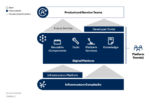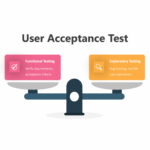Serena is hoping to entice enterprise software development managers to its Orchestrated IT suite. The firm announced plans to update this suite to version 4.5 today, bringing with it the additional ability to track software-development teams according to costs and tasks underway. The hope is to allow managers to have better visibility into the day-to-day labor of their development teams.
Carl Landers, vice president of product marketing at Serena, said that the version 4.5 update isn’t just about providing managers better visibility, however; it’s also about DevOps. “Software is everywhere,” he said. “It’s becoming much more important even in traditional non-software-oriented businesses. Those guys are now in the application-development business, and they need to push out changes. What we’re building is a more enterprise-class set of tools for those bigger enterprises who need the connectivity in their process for what comes before DevOps and what comes after.”
Version 4.5 of the Orchestrated IT suite will be generally available in May. Small installations will begin at US$12,500, with standard enterprise installations costing around $250,000.
Landers said that DevOps and software development both have similar needs when it comes to requirements management and continuous integration. To that end, Orchestrated IT 4.5 focuses on smoother request gathering, and better CI tools along the software development life cycle.
“In Serena Request and Demand Center, we’ve made specific improvements that allow the folks receiving all these requests to be able to easily capture what people are working on, the costs of work going on, and compare that to the requests coming in and do the demand-versus-capacity trade off,” said Landers.
The function is similar to that of an IT ticketing system, with one major difference: Serena has added software development management monitoring capabilities to Request Center and Demand Manager. That means a development manager can quickly see what his or her teams are working on, and how much each team’s current project is costing in time and money, and then make a decision according to that information as to where to send a brand new request.
If a team is crunching away on a shipping product, perhaps it shouldn’t be taken off of that work and reassigned to plug a security hole, for example. Landers said that Request Center and Demand Manager can track those teams and their projects, and allow development managers to make better decisions based on up-to-date information gleaned from the entire life cycle.
Landers, a former portfolio and team manager, was quick to point out that Serena is not supporting portfolio-level management with this tool. “It’s at a gross level: What’s the mobile team working on?” he said. “As the mobile team takes on projects, their availability automatically rolls back [in Serena Orchestrated IT 4.5].”






